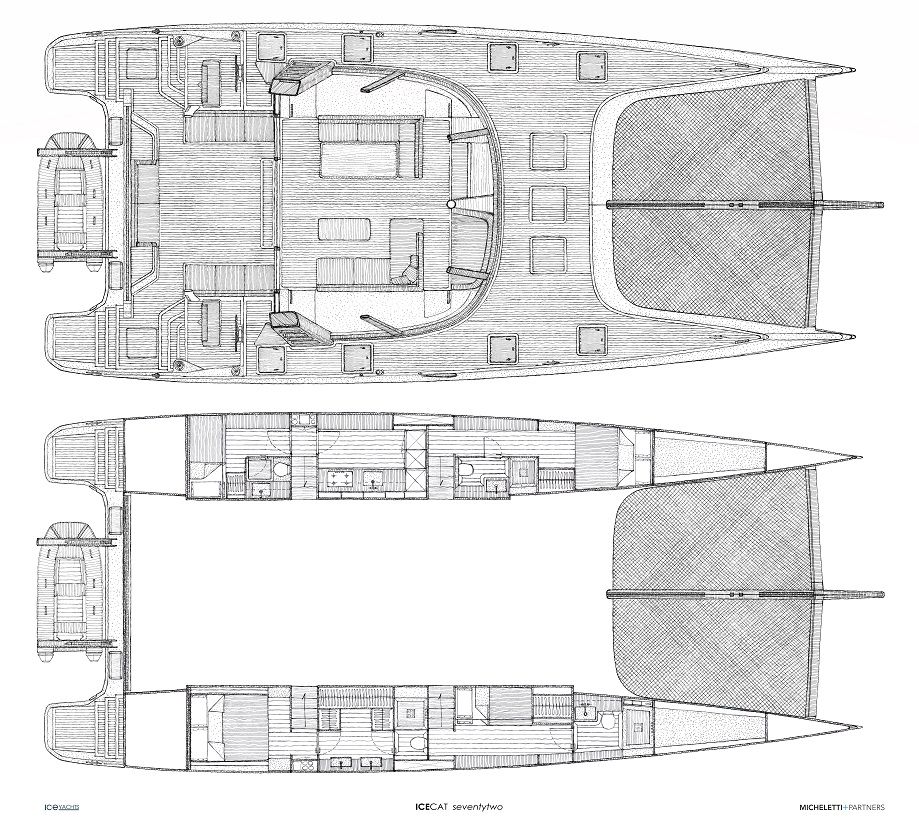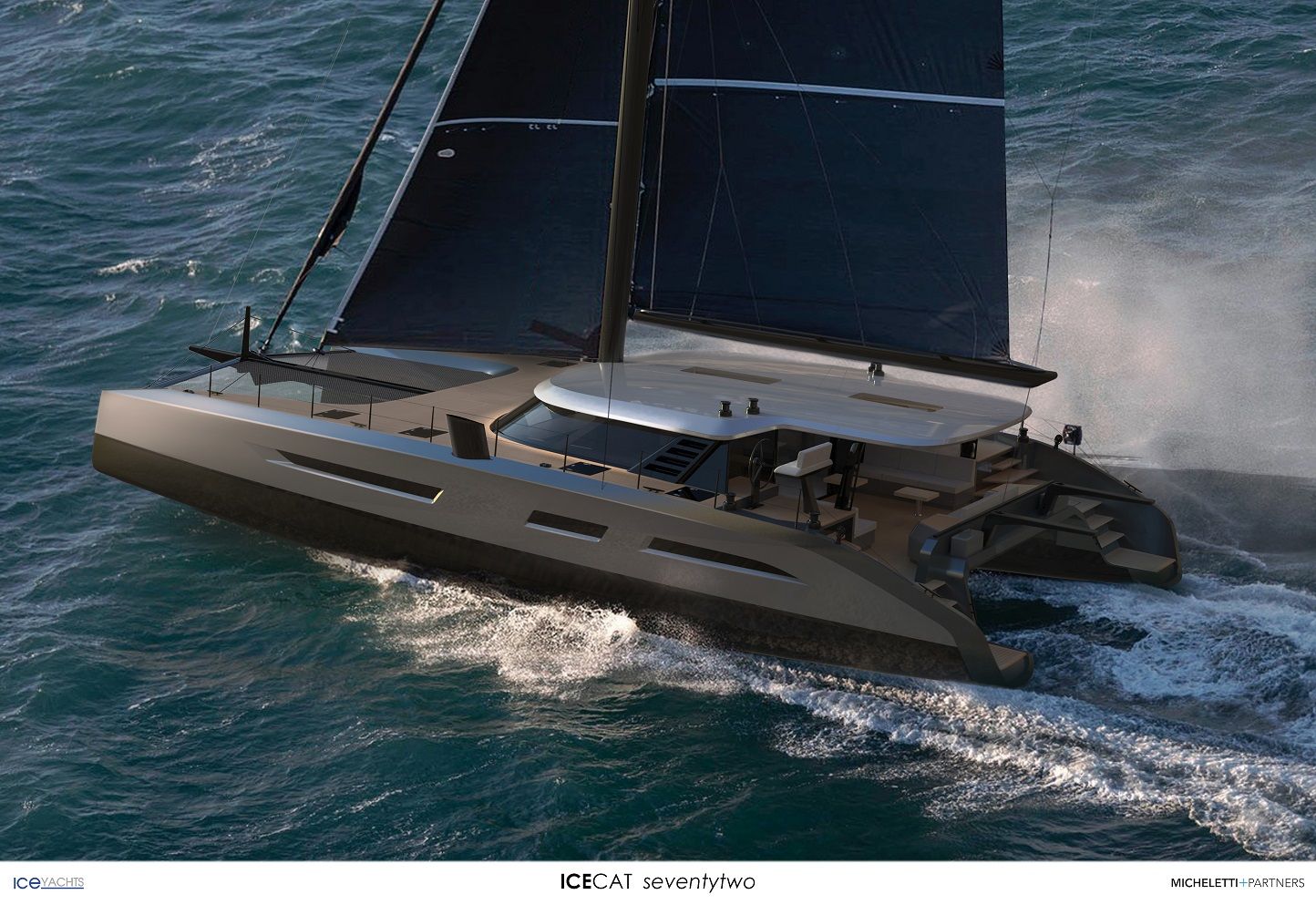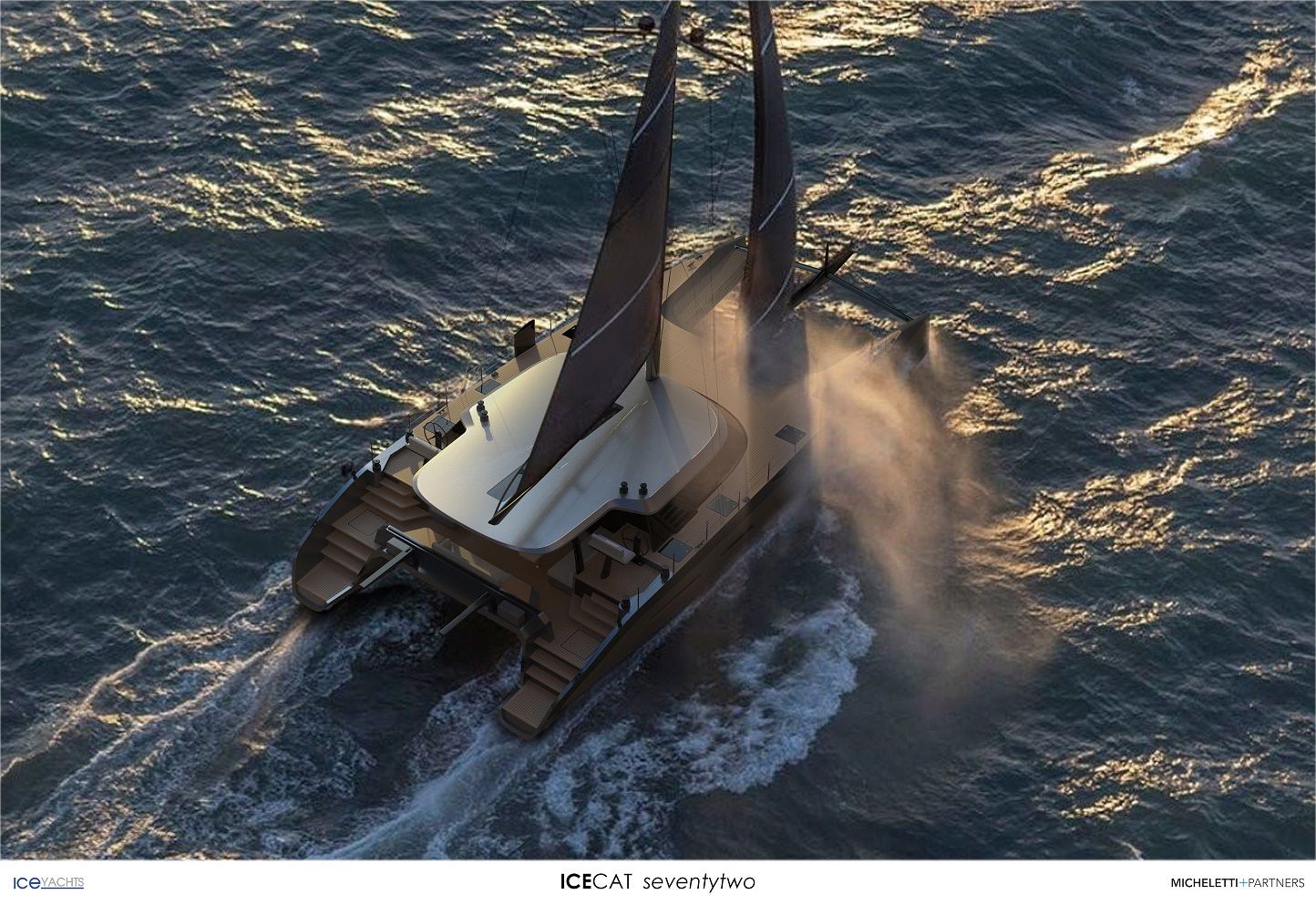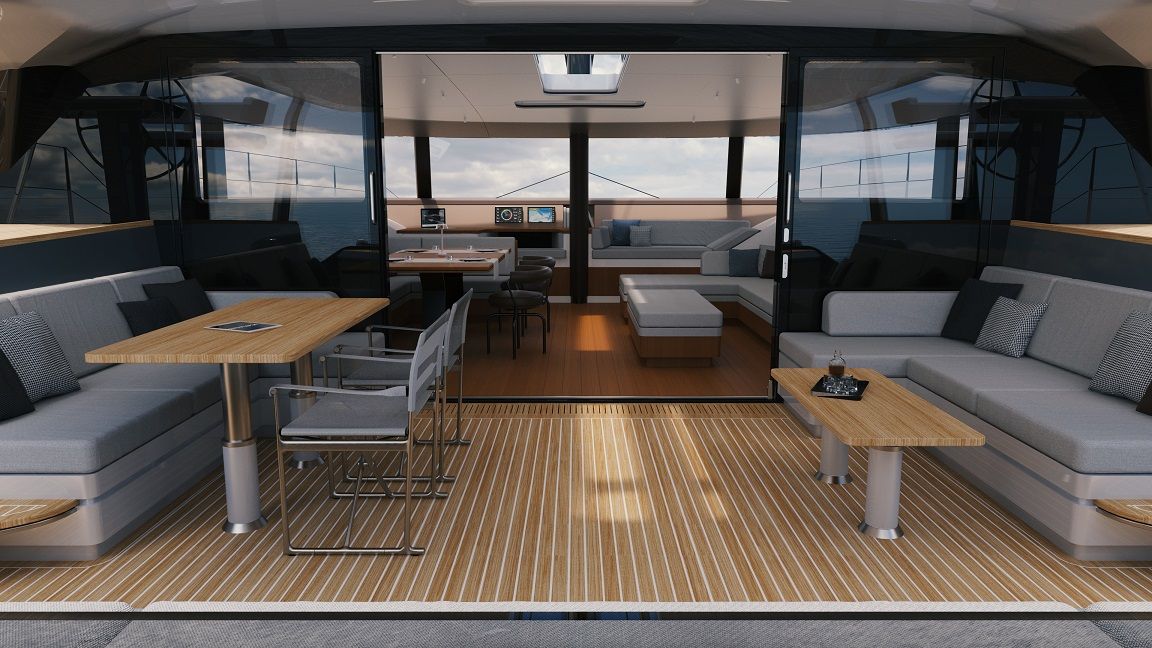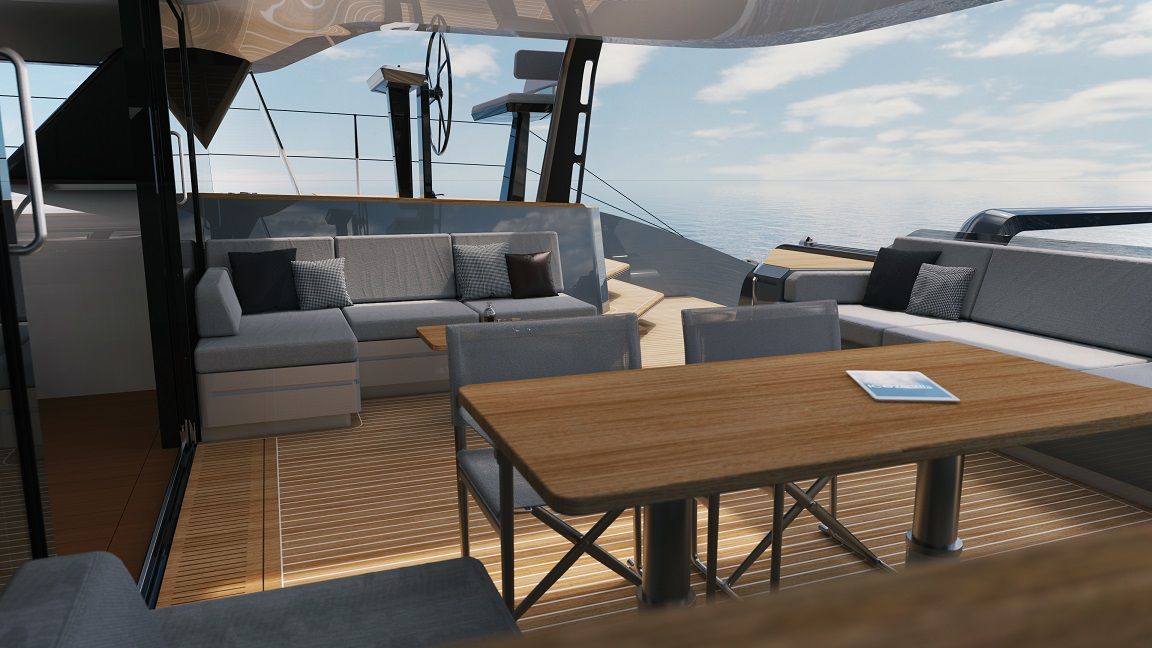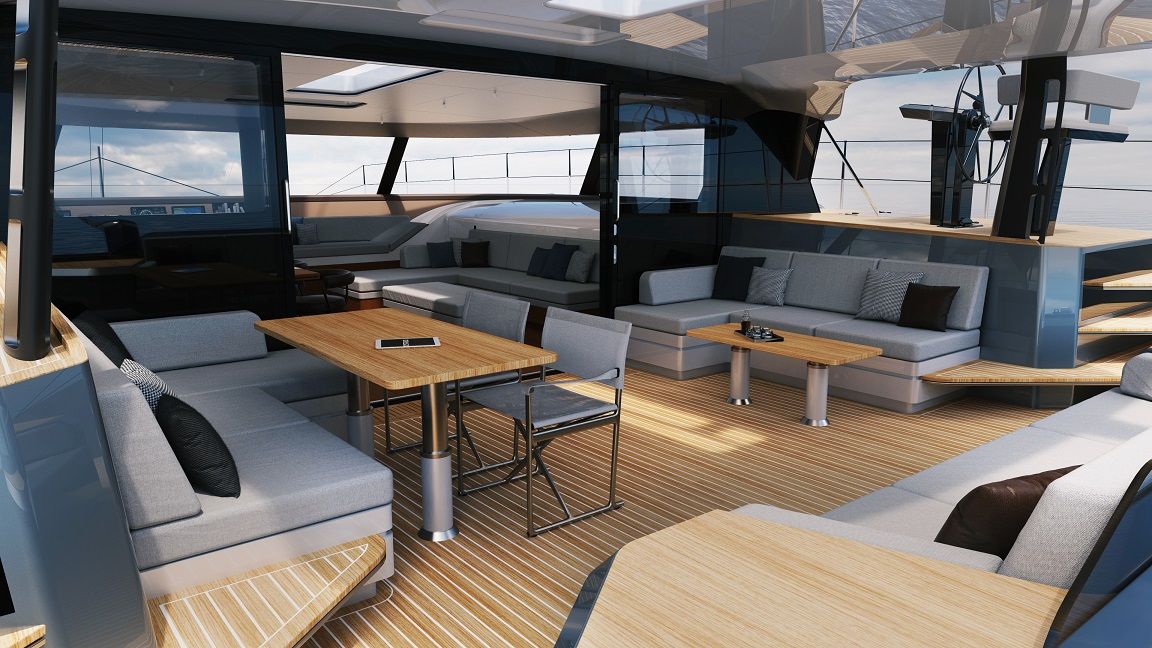
Introducing the ICECAT Seventytwo
About The ICECAT Seventytwo
beautiful, fast, super smart and technologically brilliant
Ice Yachts raises the bar after the success of the award winning IceCat 67 with the development of a 72-foot super hi-tech catamaran created in collaboration with the design firm of the eclectic architect Lucio Micheletti.
The Ice Yachts shipyard is already well established for being the manufacturer of the largest sailing catamarans built in Italy. The ICECAT Seventytwo, like the rest of the Ice Yachts multihull fleet, will be made entirely at the futuristic Ice Yachts Cremonese shipyard, featuring expert craftsman dedicated to building beautiful world-leading catamarans.
The ICECAT seventytwo represents a great step forward in the multihull design with inspirations from the automotive world. The hull has streamlined and slender lines, characterised by an almost minimal cleanliness and practical essentiality at the service of maximum performances. The goal is to obtain a catamaran capable of reaching over 30 knots of max speed. The refined sportiness and ergonomics of each space on board allow you to create excellent sailing characteristics, the comforts that a multihull of over 70 feet must have.

Inspired Design
When the seventytwo project started, ICE Yachts worked on a brief that was inspired by some previous projects, looking to create a new, functional, and fast catamaran. Naval architecture as a concept should not invent but transform, organise the changes of what is already there and of what precedes.
ICE Yachts, as a studio, are extremely convinced that nowadays, it is wise to have the idea of continuously evolving design, which must be shaped around its own demands. Therefore, each project has diverse requirements and characteristics, aiming to find its representation in different contexts. Hence, the “original and creative combinations of the individual elements” are nothing more than a solution born from the necessity of living the boat life in a unique way.
The dinette in the loft offers a welcoming place where to read or have a dialogue, creating a distinct concept of sofas, where drawers and compartments within them can hide glasses and refrigerate bottles. Besides, steering is not reserved to the captain but wants to become a constant relationship with the crew. ICECAT 72 cannot and does not want to be a design concept, but a concept of living.
The cut of the portholes or the glazing on the coachroof are not aesthetic elements but detailed studies of the optical path of the owner inside the boat, sitting at the table, on the sofa, or simply standing. Our permanent goal is to make the owner part of the design process, embracing the construction progression as a journey where to express his desires, worries, and enigmas. We love to think of design as part of a broader context, insert it into a more spatial, larger vision, and link it to the owner’s own world. We truly believe that people with different points of view and transversal visions can suggest unexpected combinations and analogies able to conceive a customized product. Our goal is to create a design free of patterns by linking it to a broader vision, bringing it closer to the client’s needs, and adapting it to his present life. We aim to unhinge the traditional concept that associates the boat with a sea lifestyle. The customers’ preferences have changed, and so have we.
We love to think that the result depends on the quality of the relationships between the partners involved, starting from their passion and willingness to grow together.
As Charles Simic said:
“Inside my empty bottle I was building a lighthouse, while everyone else was making ships.”
Lucio Micheletti
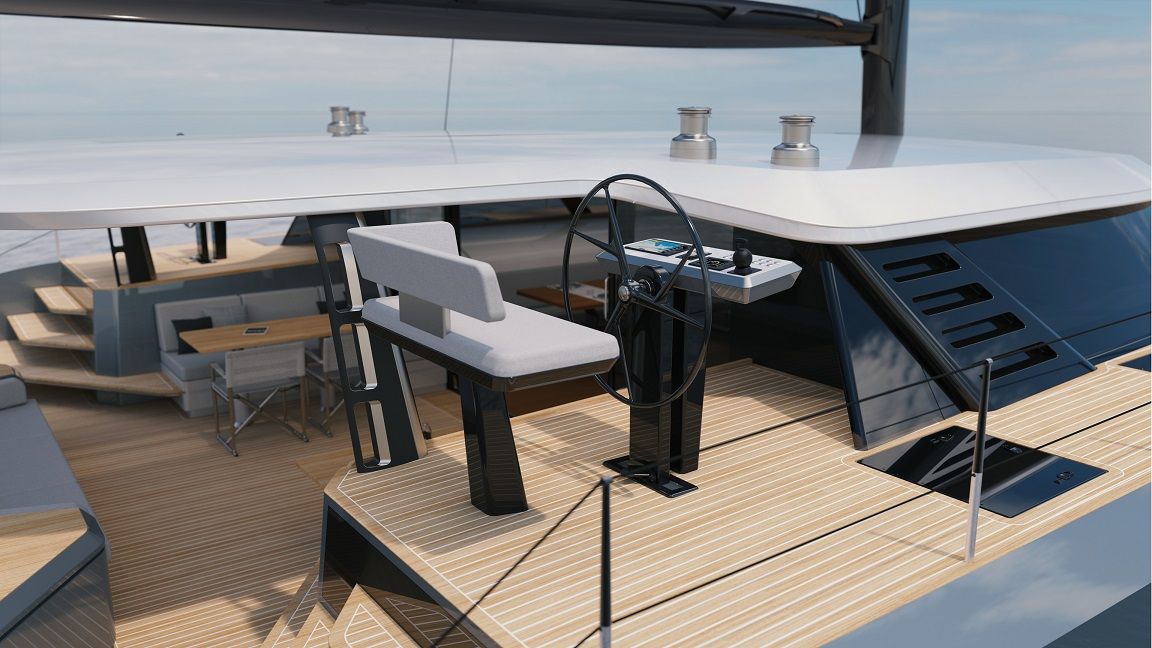
Exterior
The deck is very clean and essential to allow instruments and controls to be where they are needed, leaving plenty of space for guests and crew. The cockpit is at the same level of the dinette to create a seamless connection between interiors and exteriors spaces, usable in any condition in maximum safety. One of the distinctive elements that embodies the values of practicality and liveability on board is the hardtop bimini, extremely slender and supported by two very modern arched pillars.
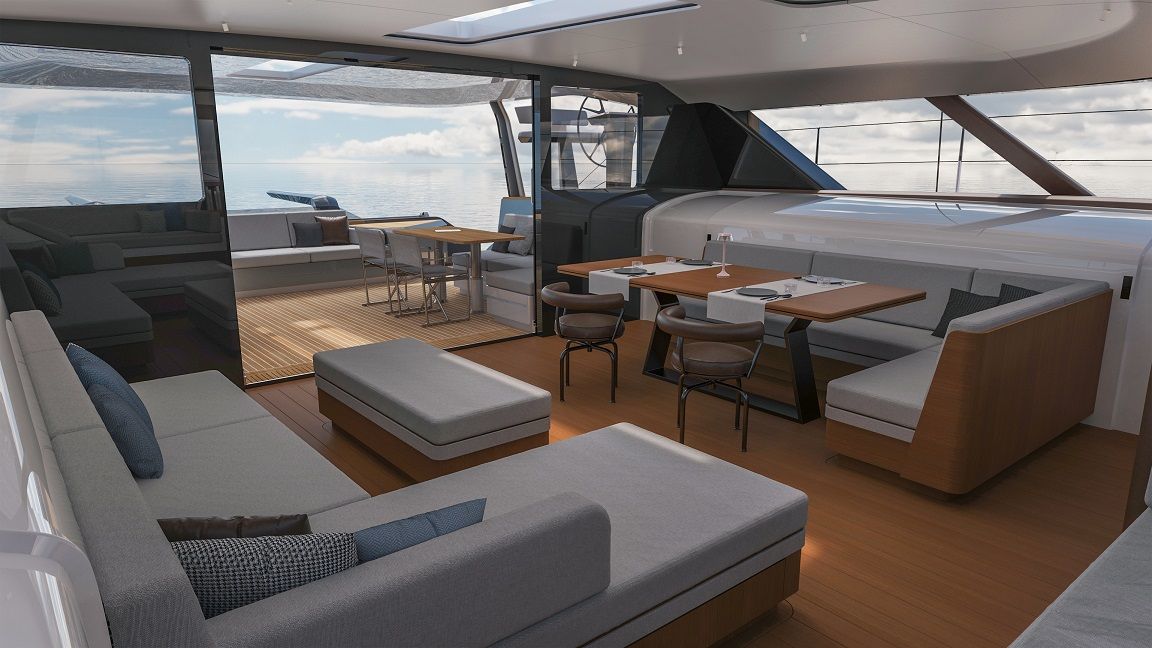
Interior
The internal layout has two accesses per hull to ensure maximum privacy and flexibility with life on board. The portside hull consists of a crew area aft with a private entrance, where there is a spacious cabin with head. From the second entrance forward, the spacious master guest cabin can be accessed, featuring a double bed and dedicated head. In the starboard hull, aft, there is the owner’s cabin with sleeping area, a very large and bright walk-in closet and a roomy head. There is a second guest cabin forward with bunk beds and head. The separation of the interior spaces has been designed to give guests a unique experience on board without compromising on comfort and functionality.
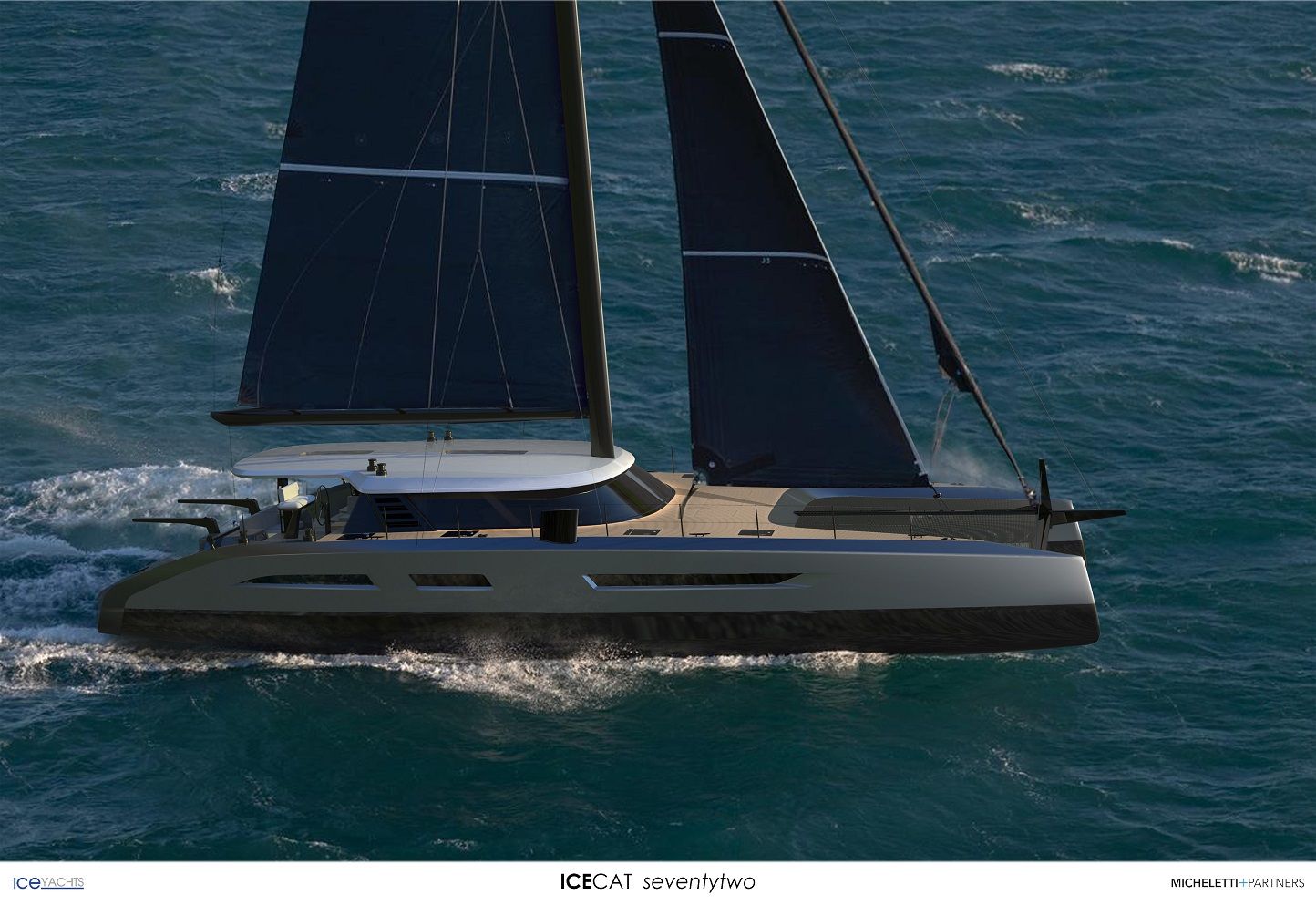
Construction
The hull and the deck are completely built in sandwich composite materials. Quadriaxial carbon fibers impregnated with epoxy resin are employed, applying multistep vacuum infusion techniques. The core of the sandwich is Corecell with different specific weights and thicknesses. ICE Yachts chooses the multistep infusion technique (infusion of the external skin, vacuum bonding of the core, infusion of the internal skin) for the ICECATS because it allows having perfect control of the final piece, with a higher percentage of impregnated resin. This allows having a combination of light weight and best mechanical characteristics. Besides, local reinforcements are made with biaxial and unidirectional carbon fibers and are optimized by fem analysis. Longitudinal and transversal structures and bulkheads are entirely realized with infusion of sandwich materials alongside the core of PVC and external layers of carbon or carbon plus e-glass fibers. The joints between the chainplate on the bowsprit and the shrouds are made in composite and steel.
The IceCat 72 has a speed under motor of 14 knots with a speed under sail of 30 knots.
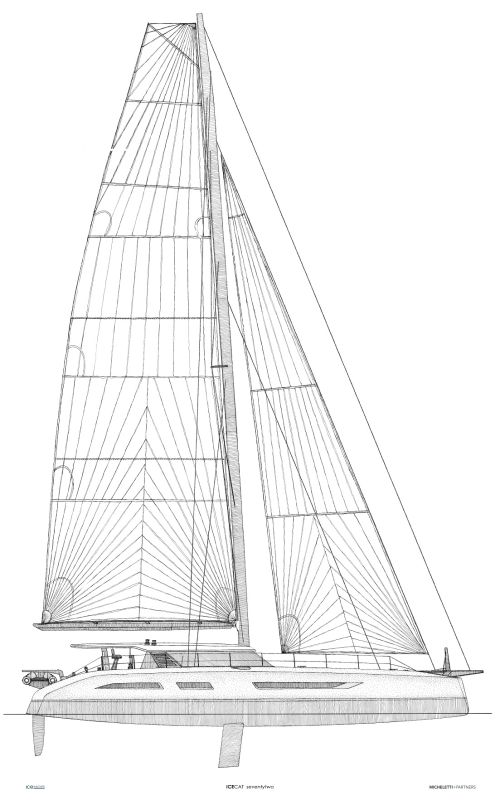
Technical Specification
- LOA 22 m
- BOA 9.8 m
MAST AND OTHERS
- Full carbon bowsprit
- Flush bow net trampoline
- Carbon shrouds
- Carbon mast with integrated lighting rod
- Carbon boom
APPENDAGES
- Low draft
- Structural skeg
- Electric lifting curved daggerboards (1,2 to 3 meters)
- Twin rudders
SAILPLAN
- Squaretop mainsail with electric traveller
- Selftacking solent and staysail
- Code 0 or Gennaker for downwind
DESIGNER:
MICHELETTI+PARTNERS
Deck Plan
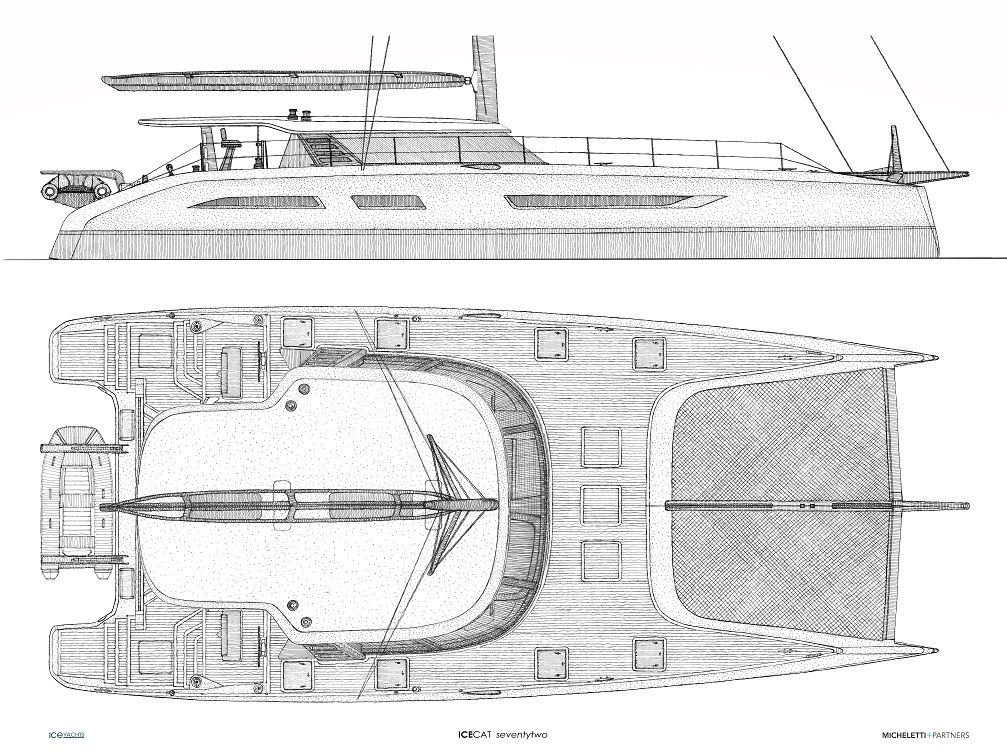
Interior
